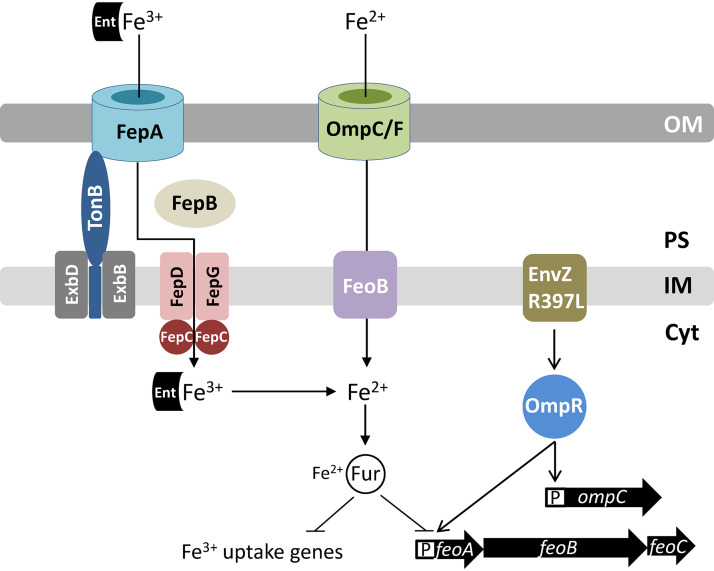FIG 8.
Diagram showing regulation of the ferric (Fe3+) and ferrous (Fe2+) uptake systems in E. coli. Fur-Fe2+ is the master regulator of transcription of genes involved in iron metabolism. Under aerobic growth conditions, where Fe3+ is the major source of iron, E. coli secretes enterobactin (Ent) in the medium to chelate Fe3+. The Fe3+-chelate complex is transported back into the cell through the outer membrane receptor protein, FepA. The TonB-ExbB-ExbD complex of the inner membrane facilitates FepA channel opening. In the periplasm, FepB interacts with the Fe3+-chelate and delivers it to the FepDGC complex for transport into the cytoplasm. Under microaerobic or anaerobic growth conditions, Fe2+ is the main source of iron. It is brought into the cell via porins OmpC and OmpF and FeoB. The EnvZ/OmpR two-component system, classically known for regulating the expression of the ompC and ompF porin genes, also induces feo expression when hyperactivated due to a specific mutation in envZ (envZR397L). This positive effect of EnvZR397L/OmpR on feo expression can overcome the negative effect of Fur-Fe2+ on feo expression, thus tipping the balance in favor of ferrous over ferric transport. Porins and EnvZ/OmpR play a crucial role in iron acquisition in a TonB-deficient background that lacks functional ferric transport systems. Abbreviations: OM, outer membrane; PS, periplasm; IM, inner membrane; Cyt, cytoplasm; P, promoter.

